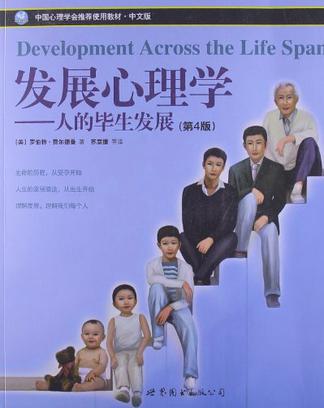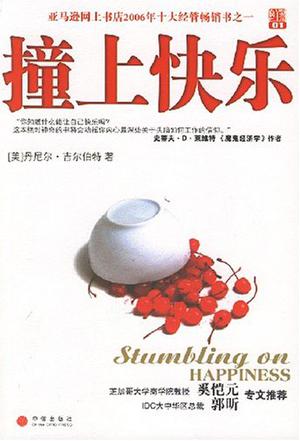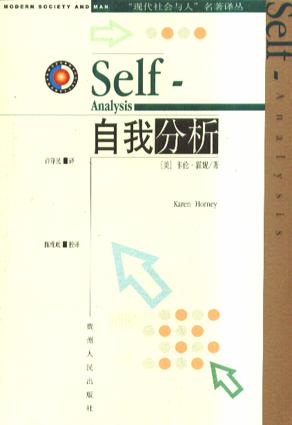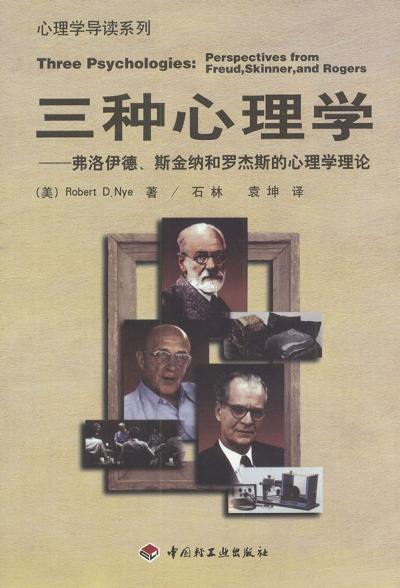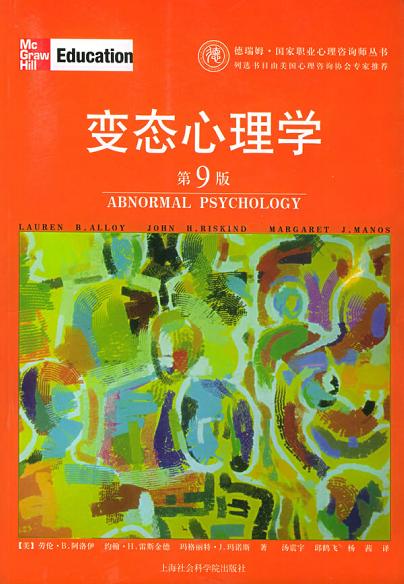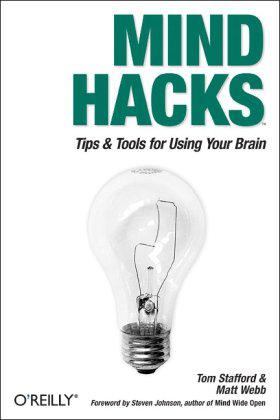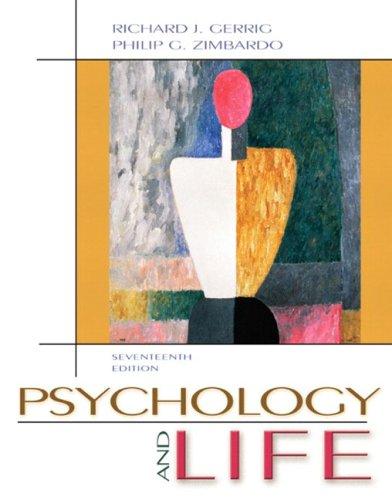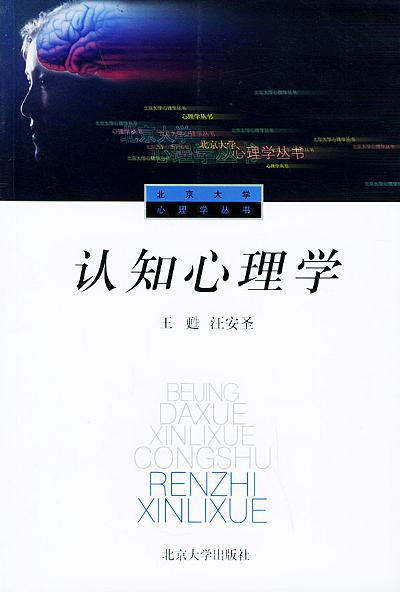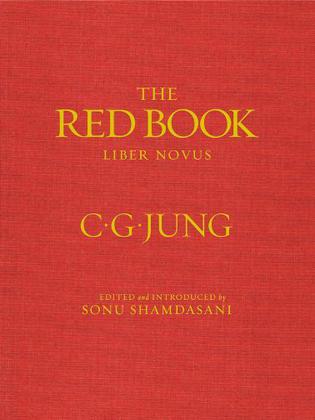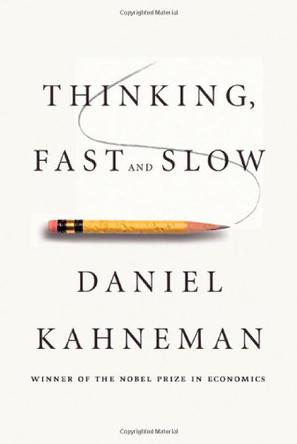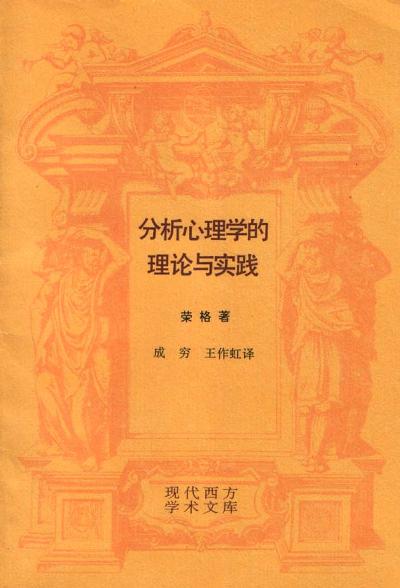欢迎来到相识电子书!
标签:psychology
-
撞上快乐
为什么相较于卖出一只上涨的股票,更让我们郁闷的是没有购买一只赚钱的股票?为什么情人更容易原谅爱人的不忠,却无法容忍他将脏盘子留在洗碗池中?为什么视力健全的人愿意为避免失明所付出的代价要比失明者愿意为得到光明所付出的代价要大得多?为什么在病人的记忆中,持续时间更长的治疗过程反而不如持续时间短的过程痛苦?为什么房屋卖主的要价常常是他自己做买主时连做梦都想不到的高价?为什么在所购商品无法退换的时候,购物者反而会更高兴? 在这本精彩绝伦、聪明睿智而又通俗易懂的书中,哈佛大学著名的心理学家丹尔尼.吉尔伯特描述了想象力的瑕疵的预见的错觉,并说明正是它们害我们错误地设计了自己的未来并让我们为此费心劳力却一无所获。吉尔伯特通过对心理学、行为经济学领域的最新相关研究成果进行生动的描述而回答了上面的问题。对于一辈子时时刻刻都在追求的东西,我们所知是如此的少,你不会感到不解吗?跟着《撞上快乐》一书,我们将展开一次乐趣无穷的奇妙之旅。 -
自我分析
如果说《我们时代的神经症人格》(1937)的问世标志着霍妮精神分析体系的诞生,那么《自我分析》(1942)、《我们内心的冲突》(1945)的相继出版,则是对其思想的进一步充实和完善。 “自我分析”是霍妮在总结自己,及其同行和患者经历的基础上,为治疗轻度神经症设计出来的方法。它把专业精神分析疗法中分析师和患者两个角色的适用部分合二为一,交由患者单独承担,独自操作,因此,“它是患者与分析师一身担”的尝试。 当今世界是竞争激烈的世界,人们在适应环境、相互交往、面对自己时,不可避免地会遇到种种压力,如果处理不当,这些压力很容易会造成精神障碍。在这方面,尤其在专业精神分析至少暂时还难以为每一个有求于它的人所用的情况下,“自我分析”不失为最佳选择之一。 -
三种心理学
《3种心理学:弗洛伊德、斯金纳和罗杰斯的心理学理论》里,作者罗的特•D•奈简明地阐述了他们的观点。弗洛伊德、斯金纳和罗杰斯三位心理学大师都曾为当代心理学思想的发展做出过得大的贡献。本书开头导言部分先分别对三位大师的心理学理论进行了扼要的概述,随后三章分别详细地介绍了弗洛伊德的精神分析理论,斯金纳的激进的行为主义理想以及罗杰斯的人文义现象学。这些章节均包括基本理论、实际例子及解释。全书最后一章用具体例子对三种心理学理论进行了比较和评价。 -
实验心理学教程
Randolph A.Smith和Stephen F.Davis合著的《实验心理学教程――勘破心理世界的侦探》(第三版)是一部独具魅力的心理学研究方法教材。两位作者都是以教学见长的心理学家,他们曾分别担任美国高校心理学教师委员会主席和美国心理学会(PAP)教学委员会主席。 在作者笔下,“实验心理学”教材变成了一本引人入胜的侦探小说、一部悬念迭生的侦探电影,一些难以理解的研究问题,被恰当地转换成了侦破过程中的某个生动环节……娓娓道来,常常会一语中的,让读者豁然开朗。你会发现,这本介绍心理学研究方法的书不但十分好看,而且能使人不知不觉地掌握心理学研究方法的深邃内涵。 本书语言通俗易懂,案例生动鲜活,论述详尽透彻。相信对于想要了解心理学研究方法的读者来说,它是一个理想的选择。 -
变态心理学(第9版)
这本书是变态心理学研究领域的经典著作。美国300多所大学/学院均采用本书作为教材,包括杜克、密歇根、霍普金斯等大学的心理学系。 这本被高度关注的教材提供了关于变态心理学最为平衡和严整的视角。由各个领域的专家共同撰写,引人入胜地阐述了当前最新的前沿研究,以实际临床观察为依据描述了每一种心理障碍的疗法,并且每一章中的案例都涵盖十分丰富。 第九版的之前各版对各学派的现代心理学理论持温和的态度,客观地介绍了心理疾病的症状、理论和治疗方法。第九版也继承了这一风格,并且附加了案例研究的录像资料,帮助初学者对临床表现有一个大致的了解。 第九版较之前各版有许多新的变化,它们包含对疾病原因的新发现、治疗的新方法、新的研究成果等。另外,需要注意的是:研究的目的是为了更好的理解精神障碍,为这些病人创造美好的未来。 《变态心理学》适合心理学专业人员、爱好者,对医学、助人、社工、教育、管理、法律等领域从业人员也有帮助。实际上,任何一个想让自己的未来更加美好、生活更加快乐的人,都应该关注书中的观点。 -
Mind Hacks
This exploration into the moment-by-moment works of the brain uses cognitive neuroscience to present experiments, tricks, and tips related to vision, motor skills, attention, cognition, subliminal perception. Each "hack" examines specific operations of the brain. By seeing how the brain responds, you'll learn more about how the brain is put together. If you want to find out what's going on in your head, then Mind Hacks is the key. -
Psychology and life
This classic book is built around the central theme of presenting psychology as a science and applying that science to our daily lives. Psychology and Life continues to provide a rigorous, research-based presentation that demonstrates that this research has immediate in daily life. For Intro Psychology students, or anyone with an interest in the subject. -
送你一座玫瑰园
我们每个人自身都拥有非常奇特的自我调节、自我修复、自我痊愈和自我成长的天赋潜能,而心理问题本身,则常常是生命向我们示警和求助的信号。 如何充分发掘和调动我们自身的心理潜能,使之成为自觉地保护自己、发展自己的有效手段? 作者以随笔的手法结合大量的案例深入简出地阐释了10多个关乎人心理卫生、生活质量和幸福感的心理学术语,它们是:自我认识、需要、潜能、情绪、能力、性格、归因方式、心理防御机制、自调节与自愈能力、习惯、发展任务、共情能力等。为使人们能学会充分地利用这些内在资源,作者还精心设计了大量的、被实践证明十分有效的心理练习题,通过做题,读者便可以逐渐掌握这些调控心理的方法,从而达到“调动心理潜能,为己所用”的目的。 -
人格心理学
《人格心理学》(影印版)从理论、应用、评价三个角度出发,对精神分析理论、物质理论、生物学流派、行为主义、人本主义和认知理论等六种主人的人格理论流派进行了全面而系统的介绍。作者行文流畅,语言通俗易懂,叙述深入浅出,引人入胜,并融入了丰富的生活案例,凸显了《人格心理学》(影印版)的实用性,可读性和趣味性。 -
心理学批判思维
●从本质上讲,人类是自私的吗? ●心理治疗师能够使人们回忆起他们遗忘了多年的性爱虐经历吗? ●月亮会使人们发疯或犯罪吗? ●通过感觉,我们对世界到底能“知道”些什么? 以上只是本书回答的有趣题中的一小部分。这在本教科书中,作者运用批判思维领域中的最新成果,指导学生以富于逻辑性、理性和批判性的方法,研究,思考和回答心理学问题。全书论述严谨,语言浅显,各章中的练习有助于培养学生成为更有效的思考者。 -
心理学史导论
《心理学史导论》初版于1986年,2001年出至第四版,是一本在美国广为使用、影响较大的大学心理学史教科书。与我国引进的其他几本西方心理学史著作相比,该书独具特色:第一,赫根汉把心理学史置于人类思想演进的大背景中来考察,让读者看到学科之间的相互影响和历史脉络。第二,赫根汉具有明确的史学观点和史学方法,站在客观、公允的立场来写作心理学史。第三,充实新材料,吸收新成果,展示新观点。第四,全书写作深入浅出,语言流畅,可读性强,非常适合作本科生教材。 -
心理与教育测量
《心理与教育测量》是华南师范大学心理学系组织南方8省师范大学编写的心理学主干课程系列教材之一。本书从测量不基本原理、测验编制技术、知名测验性能3个方面总结前人所编教材的经验,力求反映测量领域的当代特色。 1.辟专章介绍目标参照测验的理论与技术。 2.介绍了认知心理学的一些测量学新观点。 3.增加了测验等值、题库建设、教师自编测验等实用技术的介绍。 4.加强了对我国学者在测量学领域研究与成果的介绍。 5.专章介绍了现代测量理论两个主要分支项目:反应理论与概化理论的新发展。 本书可作为心理学、教育学、社会学等专业的测量课教材,也作为从事心理咨询、考试评价、人员评价、人员测评等工作的人员的参考书。 -
认知心理学
认知心理学,ISBN:9787301018101,作者:王Su,汪安圣著 -
人格心理学
第一章 什么是人格 一、人与环境 二、人格的定义 三、人格的六个流派 四、人格与文化 五、人格:理论、应用、评价和研究 六、小结 第二章 人格研究方法 一、假设-检验方法 二、个案研究法 三、数据的统计分析 四、人格评价 五、小结 第三章 精神分析理论:弗洛伊德的理论、应用与评价 一、弗洛伊德发现了无意识 二、弗洛伊德的人格理论 三、应用:精神分析 四、评价:投射测验 五、弗洛伊德理论的贡献和批判 六、小结 第四章 弗洛伊德理论:相关研究 一、梦的解析 二、防御机制 三、幽默 四、催眠 五、小结 第五章 精神分析理论:新弗洛伊德主义的理论,应用与评价 一、弗洛伊德理论的局限和问题 二、阿尔弗雷德·阿德勒 三、卡尔·荣格 四、埃里克·埃里克森 五、凯伦·霍妮 六、应用:精神分析理论与宗教 七、评价:个人叙事 八、新弗洛伊德主义理论的贡献与批判 九、小结 第六章 新弗洛伊德主义理论:相关研究 一、焦虑和应对策略 二、精神分析概念和攻击 三、依恋类型和成人的人际关系 四、小结 第七章 特质流派:理论,应用与评价 一、特质流派 二、重要的特质理论家 三、因素分析与对人格结构的探寻 四、情境论与特质论之争 五、应用:工作岗位上的“大五” 六、自陈式调查表 七、特质流派的贡献和批判 八、小结 第八章 特质流派:相关研究 一、成就动机 二、A型性格,敌意和健康 三、社交焦虑 四、情绪 五、乐观主义和悲观主义 六、小结 第九章 生物学流派:理论、应用与评价 一、汉斯·艾森克的人格理论 二、气质 三、进化人格心理学 四、应用:儿童气质与学校教育 五、评价:脑电活动和大脑不对称性 六、生物学流派的贡献与批判 七、小结 第十章 生物学流派:相关研究 一、人格特质的遗传力 二、外向-内向 三、进化人格理论与配偶选择 四、小结 第十一章 人本主义流派:理论、应用与评价 一、人本主义心理学的起源 二、人本主义理论的基本内容 三、卡尔·罗杰斯 四、亚伯拉罕·马斯洛 五、乐观体验的心理 六、应用:以人为中心的治疗和职业满意度 七、评价:Q分类技术 八、人本主义理论的贡献与批判 九、小结 第十二章 人本主义流派:相关研究 一、自我表露 二、孤独 三、自尊 四、独处 五、小结 第十三章 行为主义和社会学习流派:理论、应用与评价 一、行为主义 二、条件反射的基本原理 三、社会学习理论 四、社会-认知理论 五、应用:行为矫正和自我效能感疗法 六、评价:行为观察法 七、行为主义和社会学习流派的贡献与批判 八、小结 第十四章 行为主义和社会学习流派:相关研究 一、性别角色行为的个体差异 二、攻击性的观察学习 三、习得性无助 四、控制点 五、小结 第十五章 认知流派:理论、应用与评价 一、个人建构论 二、人格的认知因素 三、自我的认知表征 四、应用:认知行为心理治疗 五、评价:行为项目网技术 六、认知流派的贡献和批判 七、小结 第十六章 认知流派:相关研究 一、对弗洛伊德移情和压抑概念的修正 二、性别、记忆与自我解释 三、认知与抑郁 四、小结 结语:人格、文化与性别 一、文化 二、性别 术语 参考文献 -
The Red Book
The most influential unpublished work in the history of psychology. When Carl Jung embarked on an extended self-exploration he called his “confrontation with the unconscious,” the heart of it was The Red Book, a large, illuminated volume he created between 1914 and 1930. Here he developed his principle theories—of the archetypes, the collective unconscious, and the process of individuation—that transformed psychotherapy from a practice concerned with treatment of the sick into a means for higher development of the personality. While Jung considered The Red Book to be his most important work, only a handful of people have ever seen it. Now, in a complete facsimile and translation, it is available to scholars and the general public. It is an astonishing example of calligraphy and art on a par with The Book of Kells and the illuminated manuscripts of William Blake. This publication of The Red Book is a watershed that will cast new light on the making of modern psychology. 212 color illustrations -
Justice: What's the Right Thing to Do?
Harvard government professor Sandel (Public Philosophy) dazzles in this sweeping survey of hot topics—the recent government bailouts, the draft, surrogate pregnancies, same-sex marriage, immigration reform and reparations for slavery—that situates various sides in the debates in the context of timeless philosophical questions and movements. Sandel takes utilitarianism, Kant's categorical imperative and Rawls's theory of justice out of the classroom, dusts them off and reveals how crucial these theories have been in the construction of Western societies—and how they inform almost every issue at the center of our modern-day polis. The content is dense but elegantly presented, and Sandel has a rare gift for making complex issues comprehensible, even entertaining (see his sections entitled Shakespeare versus the Simpsons and What Ethics Can Learn from Jack Benny and Miss Manners), without compromising their gravity. With exegeses of Winnie the Pooh, transcripts of Bill Clinton's impeachment hearing and the works of almost every major political philosopher, Sandel reveals how even our most knee-jerk responses bespeak our personal conceptions of the rights and obligations of the individual and society at large. Erudite, conversational and deeply humane, this is truly transformative reading. -
Psychology and Life
produced by WGBH Boston with the American Psychological Association. Author Phil Zimbardo narrates the video series, as leading researchers, practitioners, and theorists probe the mysteries of the mind and body and bring psychology to life for introductory students. Each new copy of the text comes packaged — at no additional cost — with access to MyPsychLab, an online tool that includes links to the “Discovering Psychology” videos, as well as interactive viewing activities tied to the videos. Students can go to MyPsychLab to launch the videos and then either complete the viewing activities in their textbook or do the assignments online. There’s also an Index of Multimedia that makes it easy for instructors to find and launch specific video segments for classroom presentation. Psychology and Life continues to provide a rigorous, research-centered survey of the discipline while offering students special features and learning aids that will spark their interest and excite their imaginations. Psychology and Life emphasizes the science of psychology, with a special focus on applying psychology to students' daily lives. Psychology and Life continues to provide a rigorous, research-centered survey of the discipline while offering students special features and learning aids that will spark their interest, excite their imaginations, and get them to think critically about the material. Over 150 research studies are spotlighted throughout the text, with the goal of showcasing the how and the why behind key psychological research. This textbook has not only withstood the test of time, it has kept pace brilliantly with the changing field of psychology. Now available with the award-winning “Discovering Psychology” video series, produced by WGBH Boston with the American Psychological Association. Author Phil Zimbardo narrates the video series, as leading researchers, practitioners, and theorists probe the mysteries of the mind and body and bring psychology to life for introductory students. Video Viewing Guides are included at the end of each chapter of the textbook -
Thinking, Fast and Slow
Major New York Times bestseller Winner of the National Academy of Sciences Best Book Award in 2012 Selected by the New York Times Book Review as one of the best books of 2011 A Globe and Mail Best Books of the Year 2011 Title One of The Economist’s 2011 Books of the Year One of The Wall Street Journal's Best Nonfiction Books of the Year 2011 In the international bestseller, Thinking, Fast and Slow, Daniel Kahneman, the renowned psychologist and winner of the Nobel Prize in Economics, takes us on a groundbreaking tour of the mind and explains the two systems that drive the way we think. System 1 is fast, intuitive, and emotional; System 2 is slower, more deliberative, and more logical. The impact of overconfidence on corporate strategies, the difficulties of predicting what will make us happy in the future, the profound effect of cognitive biases on everything from playing the stock market to planning our next vacation—each of these can be understood only by knowing how the two systems shape our judgments and decisions. Engaging the reader in a lively conversation about how we think, Kahneman reveals where we can and cannot trust our intuitions and how we can tap into the benefits of slow thinking. He offers practical and enlightening insights into how choices are made in both our business and our personal lives—and how we can use different techniques to guard against the mental glitches that often get us into trouble. Winner of the National Academy of Sciences Best Book Award and the Los Angeles Times Book Prize and selected by The New York Times Book Review as one of the ten best books of 2011, Thinking, Fast and Slow is destined to be a classic. One of the New York Times Book Review's Top 10 Books of 2011 Editorial Reviews Amazon.com Review Amazon Best Books of the Month, November 2011: Drawing on decades of research in psychology that resulted in a Nobel Prize in Economic Sciences, Daniel Kahneman takes readers on an exploration of what influences thought example by example, sometimes with unlikely word pairs like "vomit and banana." System 1 and System 2, the fast and slow types of thinking, become characters that illustrate the psychology behind things we think we understand but really don't, such as intuition. Kahneman's transparent and careful treatment of his subject has the potential to change how we think, not just about thinking, but about how we live our lives. Thinking, Fast and Slow gives deep--and sometimes frightening--insight about what goes on inside our heads: the psychological basis for reactions, judgments, recognition, choices, conclusions, and much more. --JoVon Sotak Review “A tour de force. . . Kahneman’s book is a must read for anyone interested in either human behavior or investing. He clearly shows that while we like to think of ourselves as rational in our decision making, the truth is we are subject to many biases. At least being aware of them will give you a better chance of avoiding them, or at least making fewer of them.”—Larry Swedroe, CBS News “Daniel Kahneman demonstrates forcefully in his new book, Thinking, Fast and Slow, how easy it is for humans to swerve away from rationality.”—Christopher Shea, The Washington Post “An outstanding book, distinguished by beauty and clarity of detail, precision of presentation and gentleness of manner. Its truths are open to all those whose System 2 is not completely defunct. I have hardly touched on its richness.”— Galen Strawson, The Guardian “Brilliant . . . It is impossible to exaggerate the importance of Daniel Kahneman’s contribution to the understanding of the way we think and choose. He stands among the giants, a weaver of the threads of Charles Darwin, Adam Smith and Sigmund Freud. Arguably the most important psychologist in history, Kahneman has reshaped cognitive psychology, the analysis of rationality and reason, the understanding of risk and the study of happiness and well-being . . . A magisterial work, stunning in its ambition, infused with knowledge, laced with wisdom, informed by modesty and deeply humane. If you can read only one book this year, read this one.”— Janice Gross Stein, The Globe and Mail “A sweeping, compelling tale of just how easily our brains are bamboozled, bringing in both his own research and that of numerous psychologists, economists, and other experts...Kahneman has a remarkable ability to take decades worth of research and distill from it what would be important and interesting for a lay audience...Thinking, Fast and Slow is an immensely important book. Many science books are uneven, with a useful or interesting chapter too often followed by a dull one. Not so here. With rare exceptions, the entire span of this weighty book is fascinating and applicable to day-to-day life. Everyone should read Thinking, Fast and Slow.” —Jesse Singal, Boston Globe “We must be grateful to Kahneman for giving us in this book a joyful understanding of the practical side of our personalities.” —Freeman Dyson, The New York Review of Books “Brilliant . . . It is impossible to exaggerate the importance of Daniel Kahneman’s contribution to the understanding of the way we think and choose. He stands among the giants, a weaver of the threads of Charles Darwin, Adam Smith and Sigmund Freud. Arguably the most important psychologist in history, Kahneman has reshaped cognitive psychology, the analysis of rationality and reason, the understanding of risk and the study of happiness and well-being . . . A magisterial work, stunning in its ambition, infused with knowledge, laced with wisdom, informed by modesty and deeply humane. If you can read only one book this year, read this one.” — Janice Gross Stein, The Globe and Mail “It is an astonishingly rich book: lucid, profound, full of intellectual surprises and self-help value. It is consistently entertaining and frequently touching, especially when Kahneman is recounting his collaboration with Tversky . . . So impressive is its vision of flawed human reason that the New York Times columnist David Brooks recently declared that Kahneman and Tversky’s work ‘will be remembered hundreds of years from now,’ and that it is ‘a crucial pivot point in the way we see ourselves.’ They are, Brooks said, ‘like the Lewis and Clark of the mind’ . . . By the time I got to the end of Thinking, Fast and Slow, my skeptical frown had long since given way to a grin of intellectual satisfaction. Appraising the book by the peak-end rule, I overconfidently urge everyone to buy and read it. But for those who are merely interested in Kahenman’s takeaway on the Malcolm Gladwell question it is this: If you've had 10,000 hours of training in a predictable, rapid-feedback environment—chess, firefighting, anesthesiology—then blink. In all other cases, think.”—The New York Times Book Review “Ask around and you hear pretty much the same thing. 'Kahneman is the most influential psychologist since Sigmund Freud,' says Christopher Chabris, a professor of psychology at Union College, in New York. 'No one else has had such a broad impact on so many fields' . . . It now seems inevitable that Kahneman, who made his reputation by ignoring or defying conventional wisdom, is about to be anointed the intellectual guru of our economically irrational times.”— Evan R. Goldstein, The Chronicle of Higher Education “There have been many good books on human rationality and irrationality, but only one masterpiece. That masterpiece is Daniel Kahneman’s Thinking, Fast and Slow . . . This is one of the greatest and most engaging collections of insights into the human mind I have read.”—William Easterly, Financial Times “[Thinking, Fast and Slow] is wonderful, of course. To anyone with the slightest interest in the workings of his own mind, it is so rich and fascinating that any summary would seem absurd.”— Michael Lewis, Vanity Fair “Absorbingly articulate and infinitely intelligent . . . What's most enjoyable and compelling about Thinking, Fast and Slow is that it's so utterly, refreshingly anti-Gladwellian. There is nothing pop about Kahneman's psychology, no formulaic story arc, no beating you over the head with an artificial, buzzword-encrusted Big Idea. It's just the wisdom that comes from five decades of honest, rigorous scientific work, delivered humbly yet brilliantly, in a way that will forever change the way you think about thinking.”—Maria Popova, The Atlantic “I will never think about thinking quite the same. [Thinking, Fast and Slow] is a monumental achievement.”—Roger Lowenstein, Bloomberg/Businessweek “Profound . . . As Copernicus removed the Earth from the centre of the universe and Darwin knocked humans off their biological perch, Mr. Kahneman has shown that we are not the paragons of reason we assume ourselves to be.” —The Economist “[Kahneman’s] disarmingly simple experiments have profoundly changed the way that we think about thinking . . . We like to see ourselves as a Promethean species, uniquely endowed with the gift of reason. But Mr. Kahneman’s simple experiments reveal a very different mind, stuffed full of habits that, in most situations, lead us astray.” —Jonah Lehrer, The Wall Street Journal “[A] tour de force of psychological insight, research explication and compelling narrative that brings together in one volume the high points of Mr. Kahneman's notable contributions, over five decades, to the study of human judgment, decision-making and choice . . . Thanks to the elegance and force of his ideas, and the robustness of the evidence he offers for them, he has helped us to a new understanding of our divided minds—and our whole selves.” —Christoper F. Chabris, The Wall Street Journal “The ramifications of Kahenman’s work are wide, extending into education, business, marketing, politics . . . and even happiness research. Call his field “psychonomics,” the hidden reasoning behind our choices. Thinking, Fast and Slow is essential reading for anyone with a mind.” —Kyle Smith, The New York Post “A major intellectual event . . . The work of Kahneman and Tversky was a crucial pivot point in the way we see ourselves.” —David Brooks, The New York Times “Kahneman provides a detailed, yet accessible, description of the psychological mechanisms involved in making decisions.” —Jacek Debiec, Nature “With Kahneman’s expert help, readers may understand this mix of psychology and economics better than most accountants, therapists, or elected representatives. VERDICT A stellar accomplishment, a book for everyone who likes to think and wants to do it better.” —Library Journal “The mind is a hilariously muddled compromise between incompatible modes of thought in this fascinating treatise by a giant in the field of decision research. Nobel-winning psychologist Kahneman (Attention and Effort) posits a brain governed by two clashing decision-making processes. The largely unconscious System 1, he contends, makes intuitive snap judgments based on emotion, memory, and hard-wired rules of thumb; the painfully conscious System 2 laboriously checks the facts and does the math, but is so "lazy" and distractible that it usually defers to System 1. Kahneman uses this scheme to frame a scintillating discussion of his findings in cognitive psychology and behavioral economics, and of the ingenious experiments that tease out the irrational, self-contradictory logics that underlie our choices. We learn why we mistake statistical noise for cohere... -
分析心理学的理论与实践
已故的C.G.荣格教授,在1935年——也就是他满六十岁的时候,在伦敦的塔维斯托克(Taristock)诊所给大约两百名医生作了一个系列讲座,一共连续五个晚上。这个讲座及其讨论曾由玛丽·巴克和玛格丽·格姆打印成册,现在编成本书正式出版。 荣格的著作是广为人知的,但亲自听到他讲演的人并不多。被他的系列讲座所吸引的,不仅有各个流派的具有代表性的精神病学家和精神治疗学家,还有精神病医院的人员和大量普通开业医生。他的习惯是先讲一个小时,然后用一个小时来进行与听众的讨论。从讲座一开始,他的新颖材料、随和的态度、流畅圆熟的英语表述,就创造了一种轻松而又激励人心的气氛,讨论大大超过原先预定的时间。荣格教授不仅具有演说家的魅力,还精于选词用字,准确地表达出他的意思,他的话清晰易懂,完全没有行话或学究腔。 荣格教授主要阐述的那些原理,也是他的独特的理论贡献。他将这些原理归在两个大的范畴之内,即:心灵的结构和内容;对心灵进行探索时所采用的方法。 他把意识界定为精神与自我之间的关系,认为其性质取决于个体的总的态度类型,无论是外倾型还是内倾型。他认为,意识与外部世界的关系是通过如下四种功能来实现的:思维、情感、感觉、直觉。由于作为童识焦点的自我来自于无意识,只有假设存在着个人的和集体的无意识,才能理解童识及其功能。关于这一假说和功能的所指,人们提出了很多问题,荣格清楚地解释了他所使用的这些术语的意义。他自己就把相当多的这类术语引进了分析心理学。 在解释他调查无意识的心灵活动所运用的方法时,荣格详细说明了语词联想测试法、析梦法、主动想象法。有些人对他如此强调语词联想测试法感到吃惊,因为此法早已为人们所摒弃。荣格提到这一方法,因为它在他的早期研究中占有关键的位置。荣格年轻时曾在苏黎士的一家名为伯尔各斯利医院里作过助理医生,他那时就着手研究大脑病变的秘密,当时,系统的心理学知识还没有问世。他对语词联想测试所作的实验,取得了出乎意料的、极有意义的结果。其中最有价值的,就是发现了无意识的自主性质。好几十年来早有人断定存在着意识之外的心灵活动,只是弗洛伊德和荣格才看到了它的临床运用。荣格通过对语词联想测试法的深入精细的研究,肯定了他的假说。他指出,的确存在着受情感左右的情结,这就为弗洛伊德关于压抑的理论提供了证据。起初,在语词联想测试中,给出的刺激(语词)只引起对一个词的反应,荣格感到这大大限制了此法的价值,于是作了技术上的改动。测试还是以原先的形式即记录反应时间的方式进行,但与此同时用各种装置分别以图表法记录下受试者情绪对他的脉搏和呼吸的影响,并测量出皮肤导电性的大小变化。荣格注意到身体和心灵在发挥功能时是不可分割的一个整体,他是第一个认识到伴随体,他是第一个认识到伴随情绪而产生的心理现象的临床医生。这就是现在我们熟知并称为精神生理现象的东西。 荣格还涉足梦的领域。他讲到了梦所包含的个人的和集体的因素,特别提到了析梦法,那是他采用的主要治疗手段。他有一次竟用一句德语来回答一个很复杂的问题,说“梦把一切必要的东西都显示出来了!”他的提问者不禁咋舌。大会主席提醒他应该用英语,他才笑了笑,说,“你们瞧,这不证明无意识的确不受支配而自行表现吗?”我很清楚记得这一插曲,尽管在讲座记录中没有记载下来。
热门标签
下载排行榜
- 1 梦的解析:最佳译本
- 2 李鸿章全传
- 3 淡定的智慧
- 4 心理操控术
- 5 哈佛口才课
- 6 俗世奇人
- 7 日瓦戈医生
- 8 笑死你的逻辑学
- 9 历史老师没教过的历史
- 10 1分钟和陌生人成为朋友

